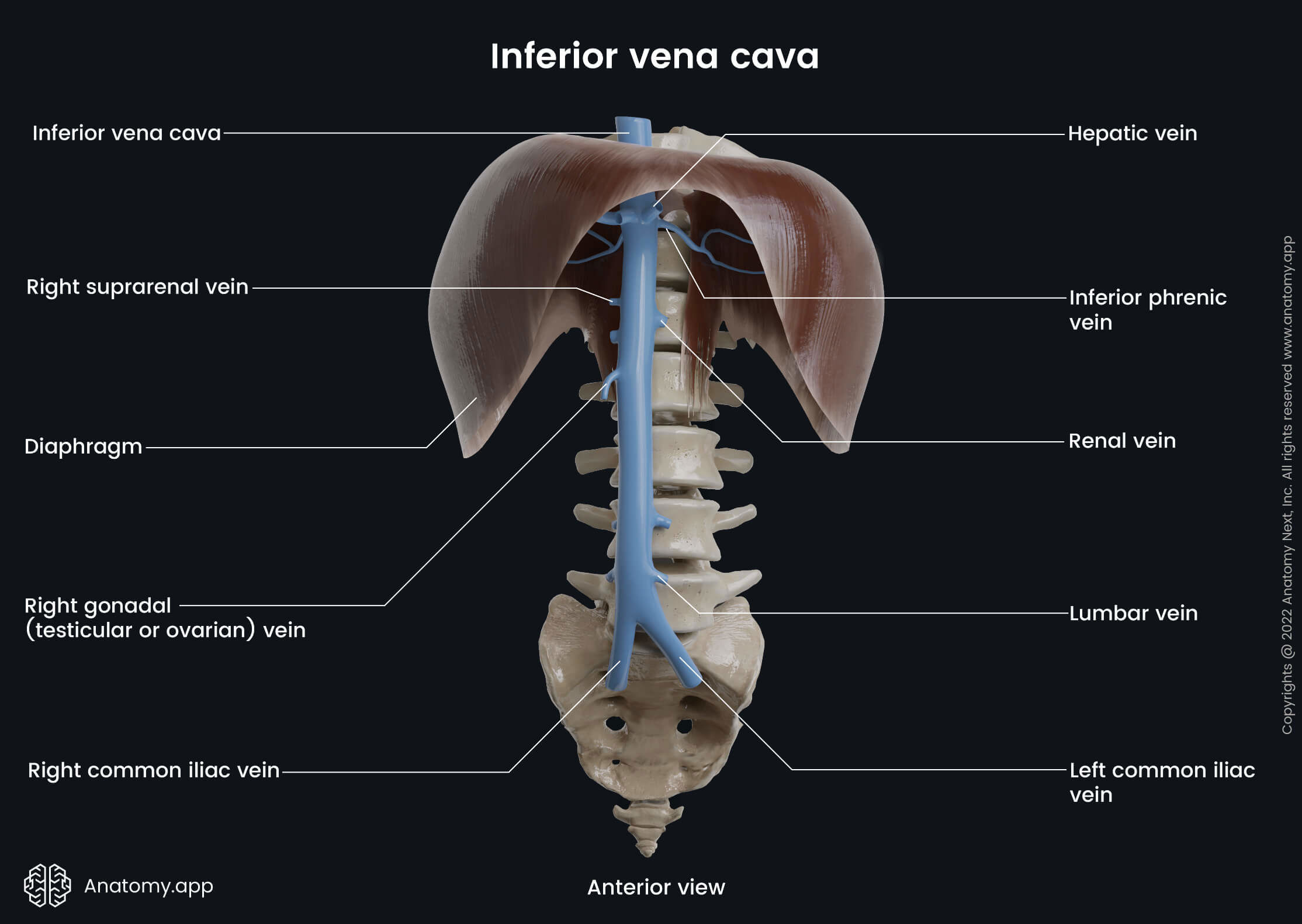- Anatomical terminology
- Skeletal system
- Joints
- Muscles
- Heart
- Blood vessels
- Blood vessels of systemic circulation
- Aorta
- Blood vessels of head and neck
- Blood vessels of upper limb
- Blood vessels of thorax
- Blood vessels of abdomen
- Arteries of abdomen
- Veins of abdomen
- Blood vessels of pelvis and lower limb
- Blood vessels of systemic circulation
- Lymphatic system
- Nervous system
- Respiratory system
- Digestive system
- Urinary system
- Female reproductive system
- Male reproductive system
- Endocrine glands
- Eye
- Ear
Inferior vena cava
The inferior vena cava (IVC, Latin: vena cava inferior) is the largest vein in the human body. It collects venous blood from the abdominal and pelvic regions, as well as the lower limbs, and carries blood to the right atrium of the heart.
The IVC arises from the fusion of the right and left common iliac veins at the level of the fifth lumbar vertebra (L5), just inferior to the bifurcation of the abdominal aorta. The IVC ascends through the posterior abdominal region on the right side of the abdominal aorta. It leaves the abdomen by piercing the central tendon of the diaphragm at the level of the eighth thoracic vertebra (T8).

During its course, the anterior surface of the inferior vena cava is crossed by the right common iliac artery, the root of the mesentery, the right testicular or ovarian artery, the inferior part of the duodenum, the head of the pancreas, the bile duct, the portal vein, and the liver. Tributaries to the inferior vena cava include the following veins:
- Common iliac veins
- Lumbar veins
- Right testicular or ovarian vein
- Renal veins
- Right suprarenal vein
- Inferior phrenic veins
- Hepatic veins
Lumbar veins
There are usually five pairs of lumbar veins. These vessels deserve special attention because of their unique connections. Not all lumbar veins drain directly into the inferior vena cava. The 5th lumbar vein usually empties into the iliolumbar vein, a tributary of the common iliac vein. The 3rd and 4th lumbar veins generally drain into the inferior vena cava. But the 1st and 2nd lumbar veins may drain into the ascending lumbar veins.
The ascending lumbar veins are long anastomosing vessels that connect the common iliac, iliolumbar, and lumbar veins with the azygos venous system of the thorax. If the inferior vena cava becomes blocked, the ascending lumbar veins become important collateral pathways between the lower and upper parts of the body.